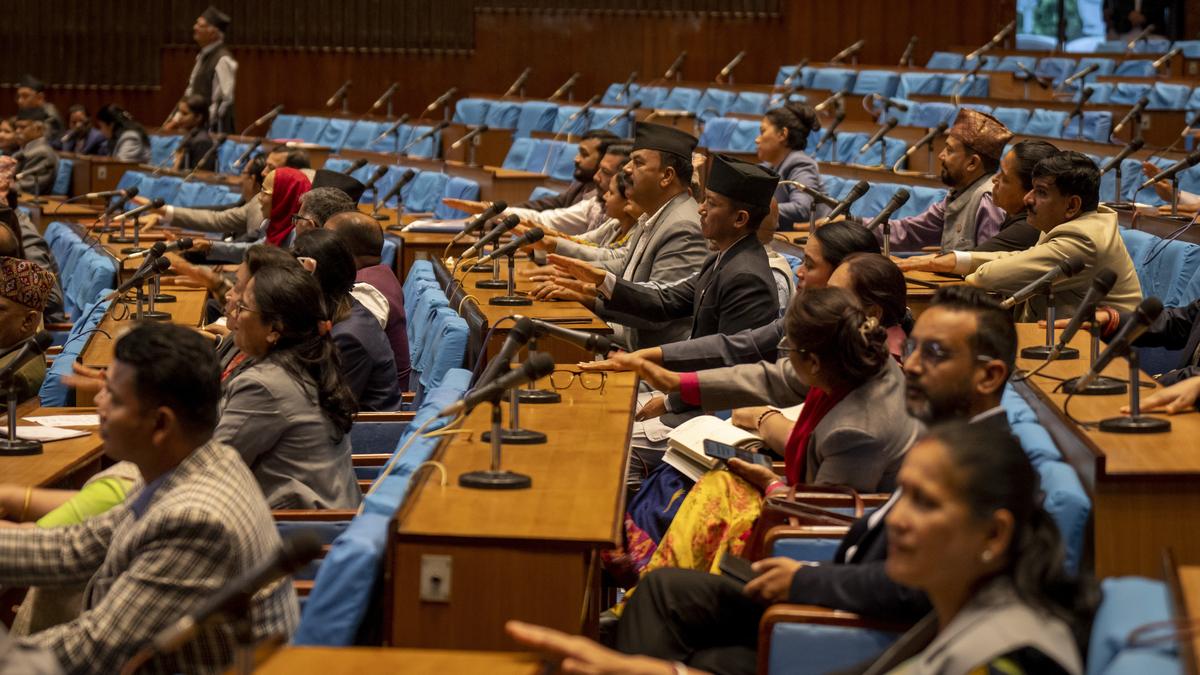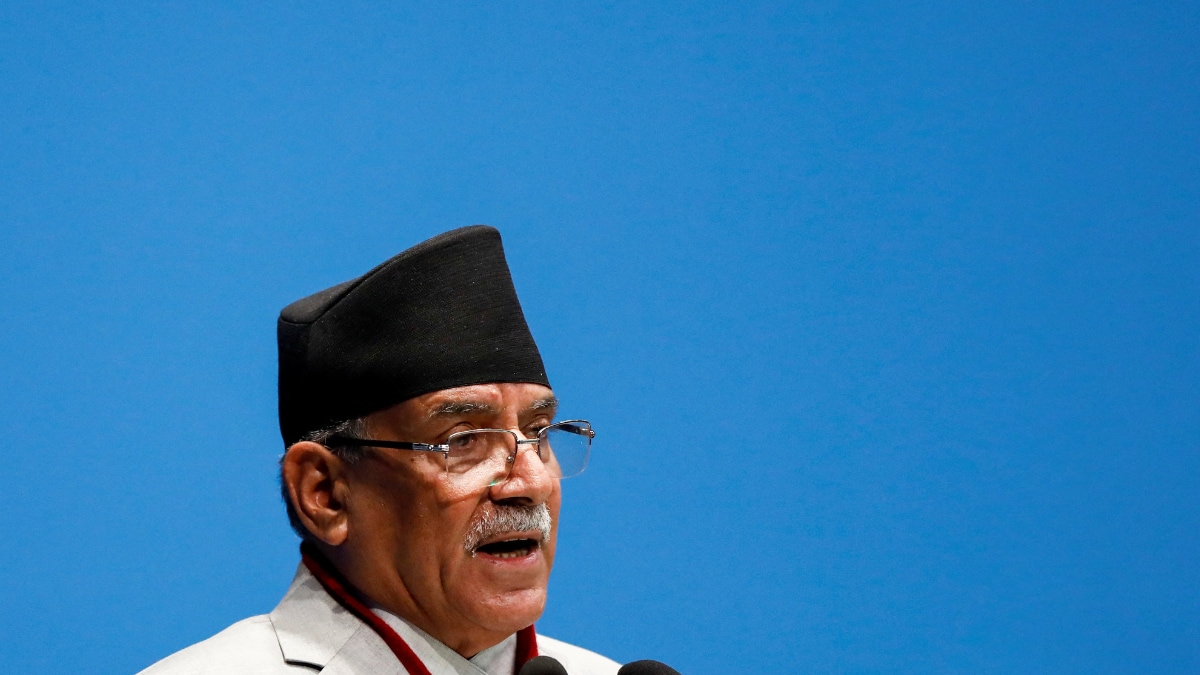- July 4, 2024
Constitutional changes on the agenda as new bloc is set to form government in Nepal

Kathmandu
Just less than two weeks ago, Nepal Prime Minister Pushpa Kamal Dahal ‘Prachanda’ was oozing confidence.
On June 22, he told his party supporters that he had control over the “magical number” to lead the government till the next election. “With magic, anything can be fixed,” he said.
Since his election as Prime Minister for a third time on December 25, 2022, Prachanda, the chairperson of the Nepal Communist Party-Maoist Centre (NCP-MC), has switched sides three times between the Nepali Congress (NC) and Communist Party of Nepal-Unified Marxist Leninist (CPN-UML). First he left the NC to join hands with the CPN-UML. Then in February last year, he deserted the CPN-UML to form an alliance with the NC. And in March this year, he went back to the CPN-UML.
But what Prachanda said on June 22 did not go well with the CPN-UML chairperson K.P. Sharma Oli, who, as per an agreement reached with Prachanda, was supposed to lead the government after one year.
Meanwhile, NC president Sher Bahadur Deuba, jilted twice by the former guerilla leader, was waiting for an opportune time.
At the stroke of intervening midnight of Monday and Tuesday, Mr. Deuba, 78, and Mr. Oli, 78, signed a deal to oust Prachanda. Though the agreement reached between the NC and the CPN-UML — which have 88 and 79 seats, respectively, in the 275-member House of Representatives — has not been made public, they have said time has come to amend the Constitution and ensure political stability for which the two largest parties in parliament need to form a “national consensus government.”
The CPN-UML on Wednesday evening withdrew its support to the Prachanda government. Both the NC and the CPN-UML have called on Prachanda to resign and “pave the way” for the formation of a new government.
Prachanda, who leads the third largest party in parliament with 32 seats, has maintained that he won’t resign and that he will seek a confidence vote in parliament. As per the constitutional provisions, the Prime Minister has to seek a confidence vote within 30 days from the date a coalition partner withdraws its support. It will be his fifth confidence vote in one and a half years, but this time, he is almost certain to lose.
More than meets the eye
Observers said they were tired of being manipulated by Prachanda, 69, who leads the third largest party in parliament with just 32 seats. and Fuelled by their desire to return to power, Mr. Deuba and Mr. Oli were working on a plan for quite a while to give Prachanda a taste of his own medicine.
“It was known for quite a while that Prachanda’s game would end soon; what was not known was how and when,” said Krishna Khanal, a political scientist. “But the NC and CPN-UML’s claim of constitutional amendments for political stability lacks credibility. It’s only for public consumption.”
Mr. Khanal believes Nepali parties have mixed up government stability with system stability and misled the public by selling the idea of political stability.
“Governments may have changed frequently, but there is stability in the system,” he said.
“And it’s up to the political parties and their leaders to make the system work.”Meanwhile, yet another argument did rounds in Kathmandu about the new alliance. Both the NC and the CPN-UML were said to be in a bid to halt the Prachanda government’s plans to dig out some corruption cases, as they feared some of their influential leaders could be dragged in.
Home Minister Rabi Laimchhane said in parliament on Monday that preparations were under way to form a commission to investigate corruption cases. Leaders in private would not rule out the argument but refused to provide details.
Flaws in constitution?
When the NC, CPN-UML and the NCP-MC, Nepal’s major parties, decided to fast-track the Constitution on September 20, 2015, some sections of the society were protesting, saying the document further marginalised them. Since then two sets of general elections have been held. Nevertheless, the public’s aspirations and basic needs remain unfulfilled even as the country has transitioned from a unitary system of governance to a federal democratic republic.
The NC and the CPN-UML have blamed the electoral system as the main source of political instability in the country.
As per Nepal’s electoral system, 165 members in parliament are elected under the First-Past-the-Post (FPTP) system, and 110 members are elected under the Proportional Representation (PR) system. The PR system guarantees inclusion, as parties are constitutionally bound to nominate women and people from the marginalised groups. Another 550 members are elected to seven provincial Assemblies under the same FPTP and PR systems. With chances of any single party winning a majority being slim, provinces have also become a hotbed of revolving door politics.
“It had become evident that there was a need to tweak the electoral system,” said Govind Raj Pokhrel, an NC leader. “There have been concerns that the current electoral system cannot ensure political stability.”
But a constitutional amendment is easier said than done. It requires two-thirds votes in both the Lower House and the Upper House to pass the amendments. The combined strength of the NC and the CPN-UML is short of a two-third majority. Some small parties with their base in the Madhesh region, along the southern plains, are unlikely to extend support to a move that aims at scrapping the PR system because they have been the chief advocates of the system.
The Rastriya Swatantra Party, the fourth largest force with 21 seats, has made its dislike for provinces clear, but whether it will be part of the agenda of NC and CPN-UML is not clear yet. The Rastriya Prajatantra Party, which has 14 seats, has hinted that it would support the constitutional amendments. But the party is seeking a complete reversal of the Constitution to restore the monarchy and Nepal as a Hindu state.
Mr. Khanal believes, in light of growing concerns, that none of the governments has been able to address public concerns and there may be a need to “review” some constitutional provisions. “But this current constitutional amendment claim is not achievable – neither politically nor mathematically,” he said.
Slippery slope
C. K. Lal, a political analyst, said the very idea of changing the electoral system stems from the CPN-UML’s regressive stance.
“There are three ideas in play – changing the electoral system, reversing federalism and a backward journey to the 1990 Constitution,” said Mr. Lal. “This has been the CPN-UML’s official position.” The NC and the CPN-UML played the leading role in restoration of democracy in Nepal in 1990, and the Constitution that was promulgated then maintained constitutional monarchy.
“The NC so far has been in two minds,” said Mr. Lal. “Therefore, the new alliance’s rallying cry for constitutional amendments is also an attempt to test the waters.”
“And they needed an excuse as well to unseat Prachanda,” he added.
According to the deal, Mr. Oli, a two-time PM, will lead the government for the first half of the remaining three and a half years of the current Assembly, and create ground for constitutional amendments. He will then hand over power to Mr. Deuba, a five-time PM, to oversee the 2027 election. Nevertheless, there have not been any consultations within these parties on the content of the amendments.
Meanwhile, concerns have grown that the two largest parties forming the government could render the parliament Opposition-less.
Mr. Khanal, however, says there has been such a rapid degradation of political culture in Nepal that parliament has, by and large, always been without an effective Opposition.
“The Constitution demands some behaviour and character from political parties,” he said. “With opportunism becoming the new normal, the NC and the CPN-UML have contrived a ruse to conceal their failure, and ensure their return to power by subterfuge.”
(Sanjeev Satgainya is an independent journalist based in Kathmandu)







